THE 11 TOP ART DECO DESTINATIONS AROUND THE WORLD
30Set2020 Filed under: Curiosità dal mondo, English Autore: PressWell, 2020 was supposed to be full of nostalgic glam, harkening back to the Roaring ’20s and optimistic Great Gatsby glitz. It hasn’t been a champagne coupe kind of year, but the now century-old art deco eye candy that’s scattered around the globe isn’t going anywhere
This fresh, decorative style came out of France just before WWI and lasted well into the 1940s. Fresh, modern forms were augmented by imagery and colors inspired as never before by travel to such far-flung destinations as the South Pacific, Egypt, and China – places newly accessible to the colonial leisure class, who boarded new steam and rail lines to tour the world. And for those without the means to travel, influential artists like Matisse, Gauguin, and Cézanne brought their interpretation of global art forms back to European audiences.
Here are some of the destinations around the world with the most art deco swagger.
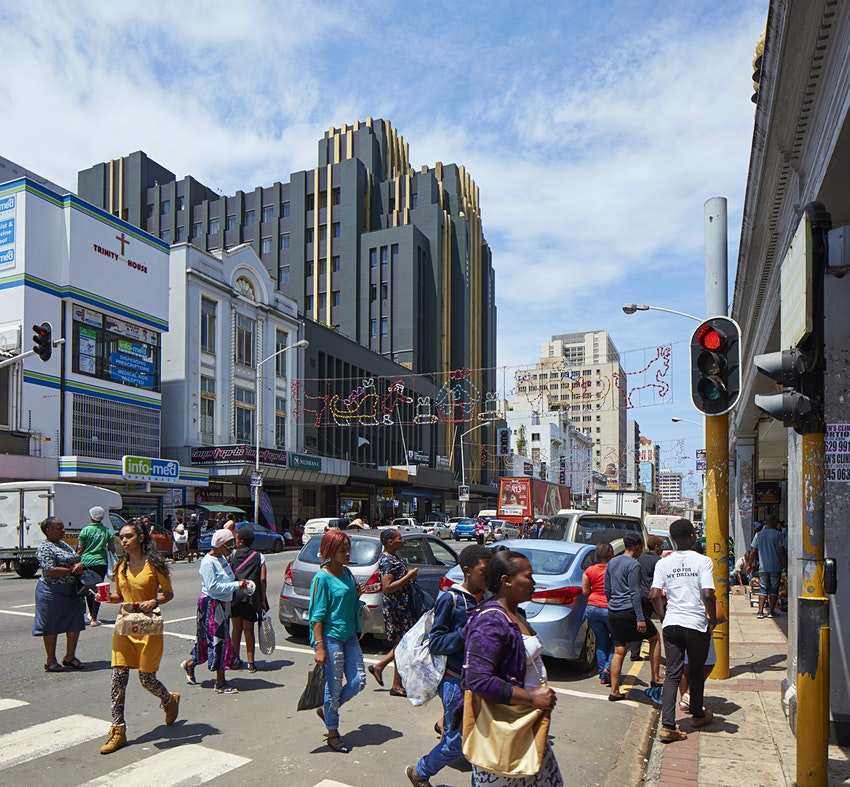
Durban, South Africa
The prominence of art deco architecture in Durban, South Africa reveals more than meets the eye when you first scan its streamlined, stuccoed cityscapes. In the 1920s and ’30s, colonialism was still in full swing, even as a rising sense of African nationalism swept the continent. During the art deco period, colonizers brought troves of African artifacts and religious objects back to European museums and galleries, and in turn white artists were deeply influenced by – and appropriated – indigenous African motifs.
Eventually, those imperial powers brought a whitewashed version of those motifs back to Africa in the form of new, synthesized styles like art deco. This was just as cities like Durban (known by the Zulu as eThekweni) were expanding and eager to showcase their modern, European sensibilities – though the end of both art deco and colonialism were right around the corner following WWII, and South Africa was already laying the groundwork for apartheid.
You can take in that complex history throughout the city at sites like the Surrey Mansions, the Cenotaph in Francis Farewell Square, the Colonial Mutual Building, Adam’s Booksellers, the Suncoast Casino, Lowry’s Corner, and the Surat Hindoo Association Building. Find self-guided walking tour maps and points of interest from the Durban Art Deco Society. Cap off your deep dive into the city’s architecture with a stay at the Albany Hotel, a centrally located 1938 beaut.
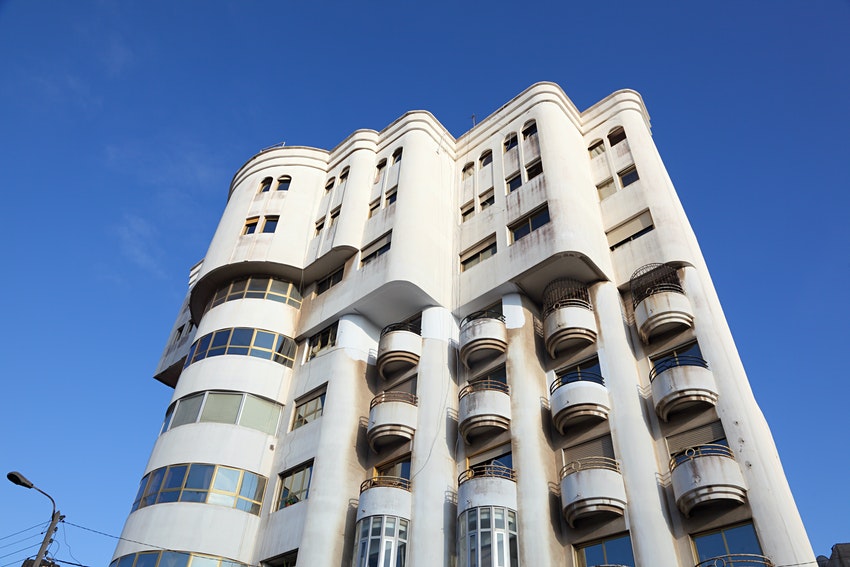
Casablanca, Morocco
It’s no surprise that Casablanca is resplendent with art deco examples, given that France established a colonial presence in Morocco in 1912, just as the style was taking off. What emerged during the French Protectorate era was Mauresque, a blend of traditional Moroccan designs and art deco, that you can still see at stops such as the Cinema Rialto, Palais de Justice, The Maret Building, the Villa des Arts, and the 1918 La Poste (the main post office). Don’t forget to stroll Rue Idriss Lhrizi for even more eye candy, before posting up at the famous Hotel Transatlantique, built in 1922, or the Hotel & Spa Le Doge, originally built in the 1930s as a private townhouse.
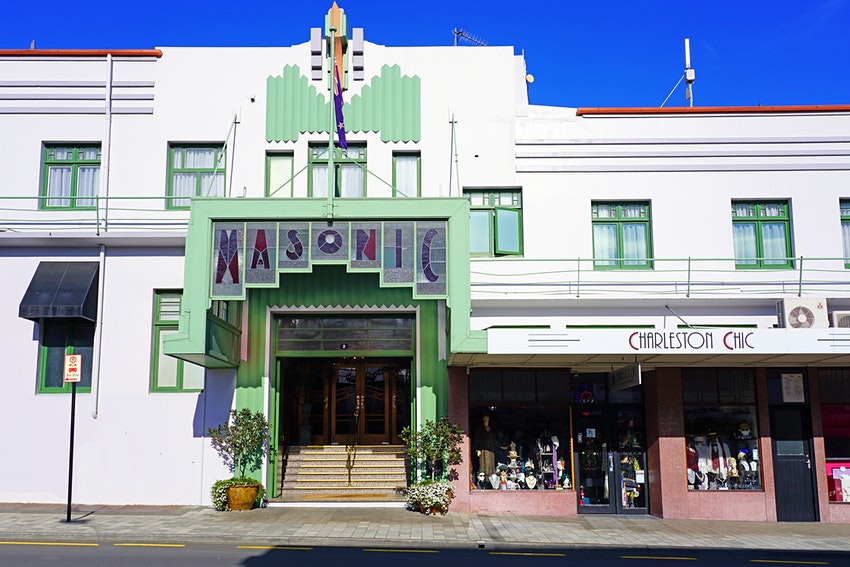
Napier, New Zealand
New Zealand’s deadliest natural disaster – the 1931 Hawke’s Bay earthquake – leveled nearly the whole town of Napier, and ensuing fires burned the rest. But the bustling seaport rebuilt such a complete art deco Main Street that it has garnered comparisons to other seaside cityscapes as Miami Beach and Santa Barbara, and was nominated for Unseco World Heritage Site status in 2007.
Don’t miss such sites as the Daily Telegraph headquarters, the National Tobacco Company Building, and the Tom Parker fountain – though the whole downtown is a dream. For some real Gatsby charm, take a combined wine and architecture tour, or zip out into New Zealand’s oldest wine region in a vintage auto.
At the end of your day, stay at the Art Deco Masonic Hotel. This streamlined beauty is on the site of the original hotel, built in the 1860s and lost to the earthquake. The version you see today was designed by Wellington architect W. J. Prowse, and stands as a testament to Napier’s resilience.
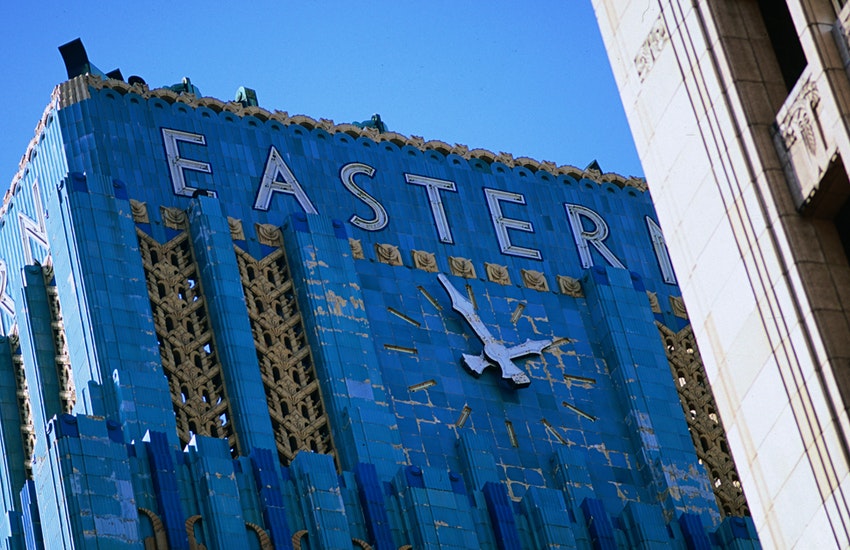
Los Angeles, California
Angelinos and visitors alike know that Los Angeles contains multitudes, but for all the city’s sprawling evolutions (and home-grown architectural staples like the dingbat) it’s never shaken its association with the glitz of Old Hollywood. Now that DTLA is having a renaissance, some of LA’s best-beloved 1920s haunts are newly fashionable again such as the Golden Gopher, which is surrounded by period beauties including the Garfield Building and the Freehand Los Angeles.
As long as you’re in the DLTA neighborhood, don’t miss The CalEdison building (the lobby is open the public), The Oviatt Building, or the Los Angeles Central Public Library – and certainly not City Hall. Further afield, you can take a blast to the past by dining at El Cholo, a 1920s joint with a bright neon sign, or the Tam O’Shanter, where Walt Disney himself liked to tip back Scotch. In Hollywood, don’t miss the the friendly Frolic Room, which got its start as a speakeasy and became a regular old dive in the mid-1930s when the chic Deco Pantages Theater opened next door.
There’s no shortage of period hotels to immerse yourself in, but some of the best include The Georgian Hotel in Santa Monica, Hotel Normandie in Wilshire, and Sunset Tower in West Hollywood.
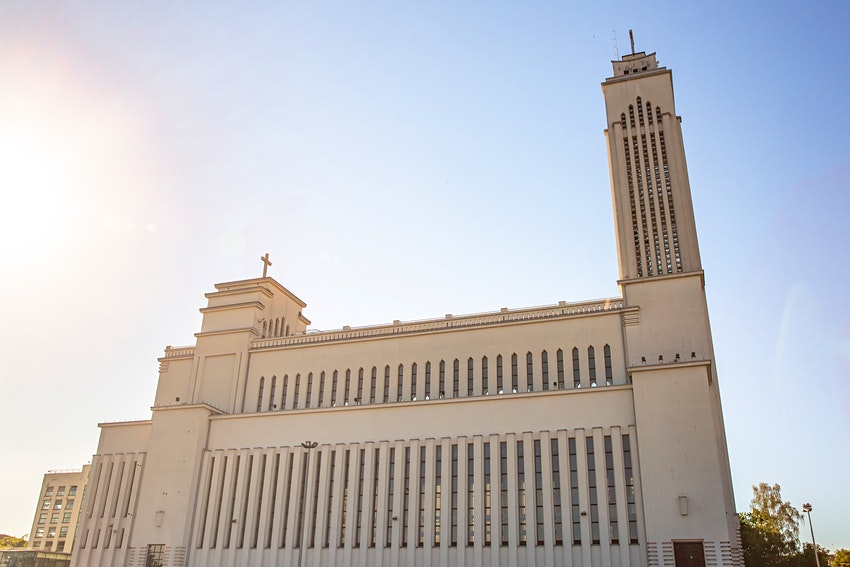
Kaunas, Lithuania
Between WWI and WWII, Kaunas was able to take a deep breath, and a turn as Lithuania’s capital. The result was a slew of construction by builders who hoped to convey the country’s modernity with a little art deco charm. Like many other cities that had a yearning for deco last century, one of Kaunas’ best examples is its Central Post Office, which along with banks, government headquarters, such as the Kaunas Municipality building, and other institutions were eager to set a tone for a new chapter of Lithuanian history and national character. Plenty of cultural attractions, theaters and cinemas got in on the fun, too, as well as the Christ’s Resurrection Basilica, which broke ground in 1934.
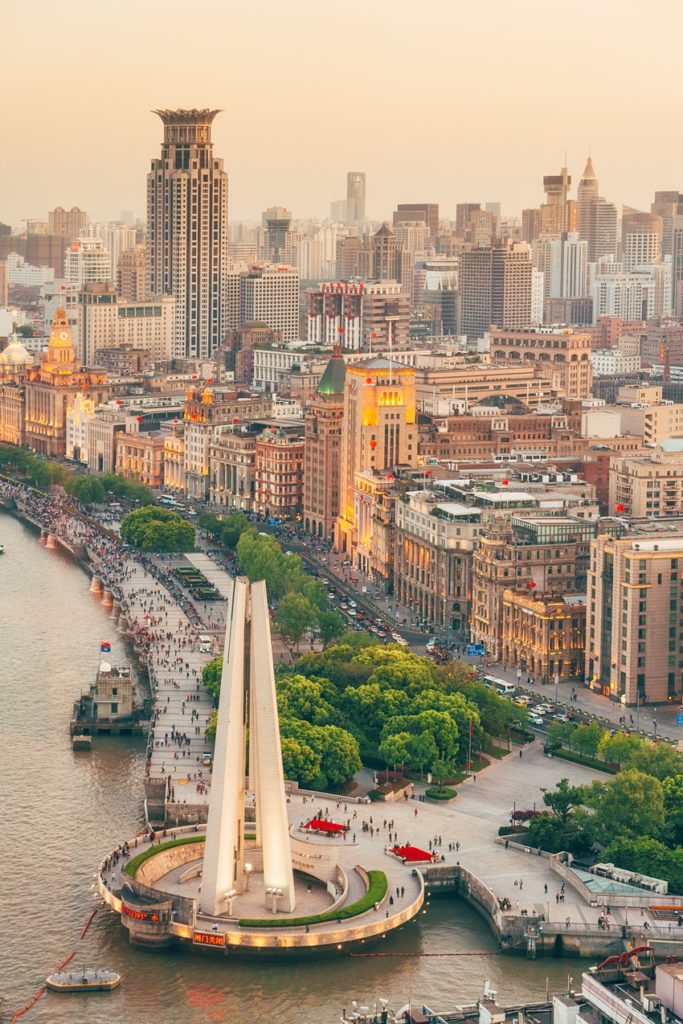
Shanghai, China
Thanks to an influx of Europeans who had been metabolizing Asian design since the art nouveau era and the return of Chinese students who brought art deco back with them, 1920s Shanghai became a canvas for a newly international generation of architects eager to explore new styles.
A hundred years later, the waterfront Bund district and the old French Concession still give travelers a glimpse into this colonial era, and the development of the Chinese Deco style that was synonymous with Shanghai. These neighborhoods are perfect for a stroll between period sites like the Bank of China Building, the Bank of Communications Building, the Cathay Theatre, and the Shanghai Arts and Crafts Museum.
You might opt to stay at the Peace Hotel, Okura Garden Hotel, the Peninsula Shanghai, the Metropolo Classiq, the Langham Yangtze Boutique Hotel or Les Suites Orient – all classics with beautiful deco architecture updated with the latest amenities.
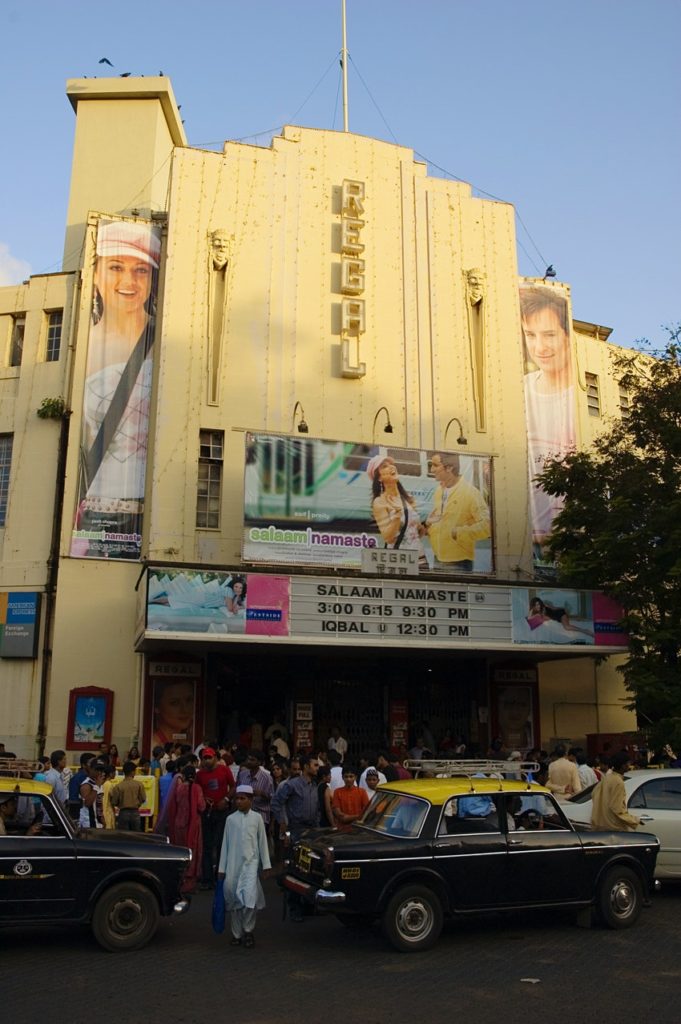
Mumbai, India
In his 1999 novel The Ground Beneath Her Feet, Salman Rushdie’s protagonist Rai says of Mumbai, “…as for the glittering art deco sweep of Marine Dr, well, that was something not even Rome could boast. I actually grew up believing art deco to be the ‘Bombay style,’ a local invention, its name derived, in all probability, from the imperative of the verb ‘to see’. Art dekho.”
Art deco was brought to India by British colonizers. A 1930s building boom in Mumbai coincided with the style’s popularity, and gave a chance for Indian architects to make art deco all their own. The sheer concentration of art deco buildings earned the Oval Maiden a spot on the Unesco World Heritage list, and continues to wow local pedestrians and visitors on Mumbai architectural tours alike. From movie theaters like the Liberty Cinema to the undulating Jehangir Art Gallery to the streamlined stacks of art deco apartment buildings, Mumbai is a feast for the senses, and a trip back in time.
Kick back at the end of the day at the modest, historical Sea Green South Hotel – a comfortable spot big on vintage charm that won’t break the bank.
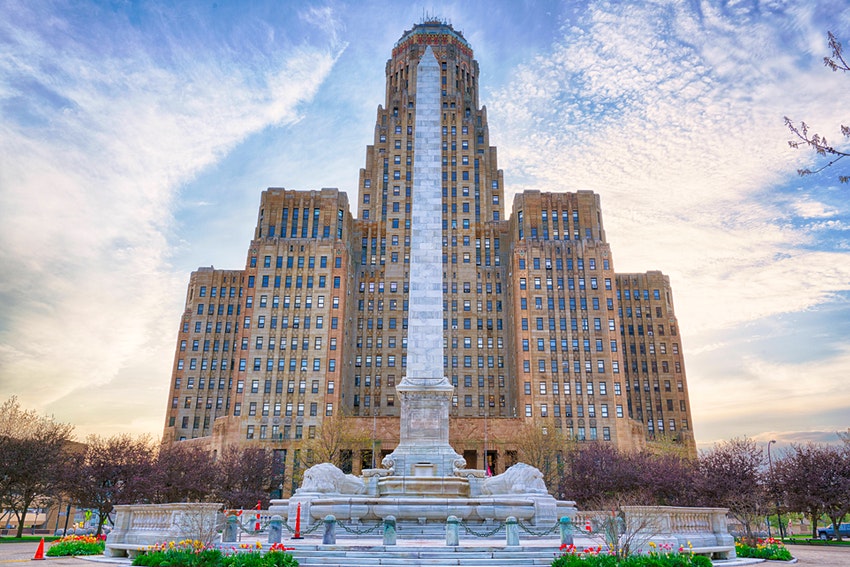
Buffalo, New York
Buffalo was once one of the premier cities in the US, with a big boom from the turn of the century to the middle of the next. Head downtown to the Court Street corridor to see some of the best examples of its art deco flavor, from the magnificently detailed Buffalo City Hall and Central Terminal (which is currently being redeveloped into an event space) to the Industrial Bank Building and Electric Tower Building.
Hotel Niagara is slated to reopen in 2021, bringing this 1924 beauty back into play for the first time since 2007. In the meantime, soak up the jazz era vibes in the lobby of the Hotel @ the Lafayette, a handsome property that blends a range of influences from the Edwardian to the deco to the contemporary.
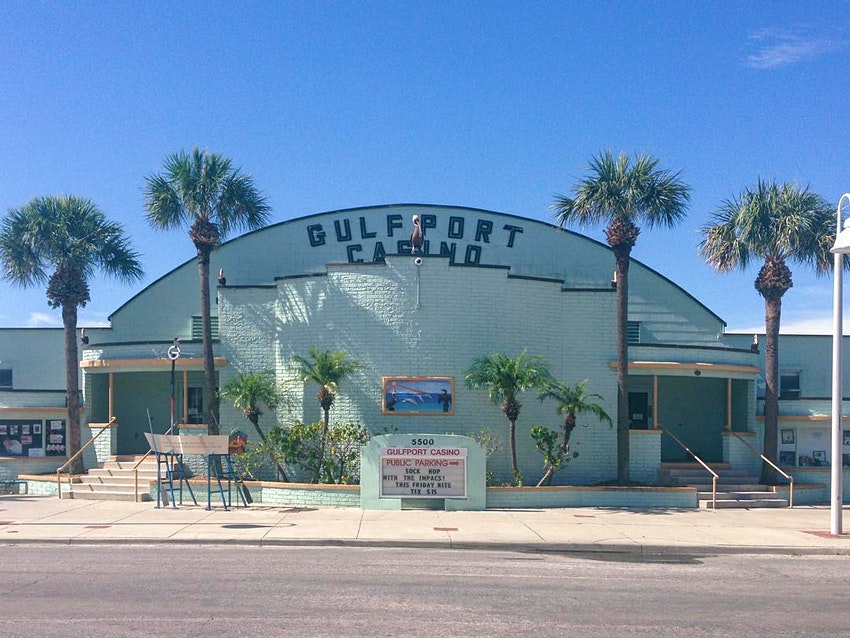
St Petersburg, Florida
Miami gets the lion’s share of accolades for its art deco edifices, but it doesn’t have the monopoly on mid-war glitz. A little further north, St Petersburg, Florida has its own 1920s treasures, from the Salvador Dali Museum to the Euro-inspired neighborhoods and arcades developed by deco disciple Perry Snell.
Much of the city blends the Mediterranean style with art deco influences into a Florida deco genre all its own, from the Municipal Utilities Building and St. Petersburg City Hall to Christ United Methodist Church to the Randolph Hotel, and even the odd Family Dollar store. On the opposite side of the peninsula from downtown St Pete, grab brunch at Stella’s and stroll the charming neighborhood – at the end of Beach Boulevard is the Gulfport Casino Ballroom, a rounded pastel dream that dates back to the swinging ‘30s jazz age.
Perhaps the crown jewel of St. Pete’s deco gems is the Don CeSar hotel, better known to locals as the Pink Palace. A true jazz age magnet, F. Scott Fitzgerald himself stayed here, as did Al Capone and President FDR. The Pink Palace even appeared in Italian filmmaker Sergio Leone’s Once Upon a Time in America (1984).
If you’d like to stay somewhere a little more low-key, however, it’s hard to beat the Avalon, a streamlined beauty close to Beach Drive and attractions like the Dali Museum. The outside is pure art deco, but inside belays St Pete’s hip, artsy side with modish, Instagram-ready style.
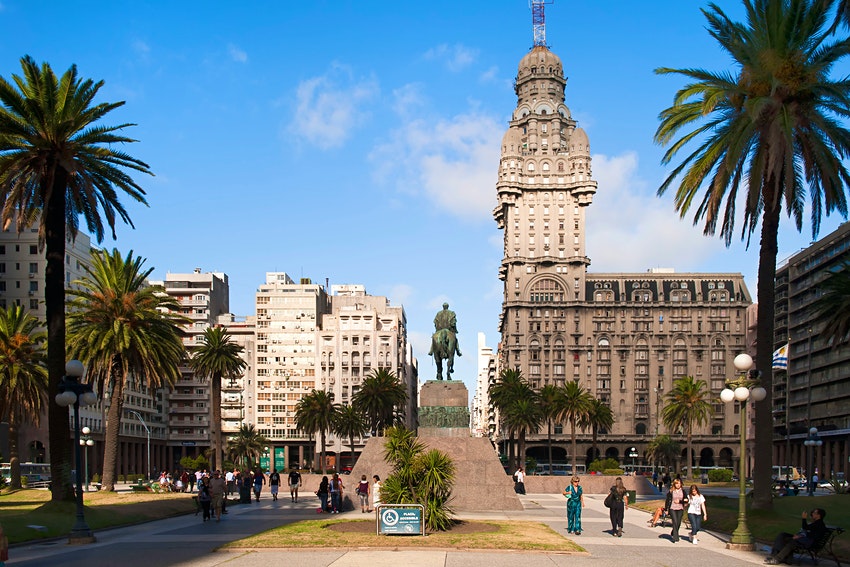
Montevideo, Uruguay
Montevideo doesn’t have the high profile of other South American capitals, but it’s rich in art deco architecture thanks to an economic boom and urban expansion at the time. Check out the Rinaldi building near the Plaza Independencia and the Palacio Díaz skyscraper near City Hall. Stop by the Montevideo Center for Photography and the Don Hotel, whilst looking out for dozens of period apartment buildings. It’s interesting to see Uruguay’s unique, often monochrome interpretation of art deco forms. Stay at the New Arapey Hotel, which carries the style inside and out.
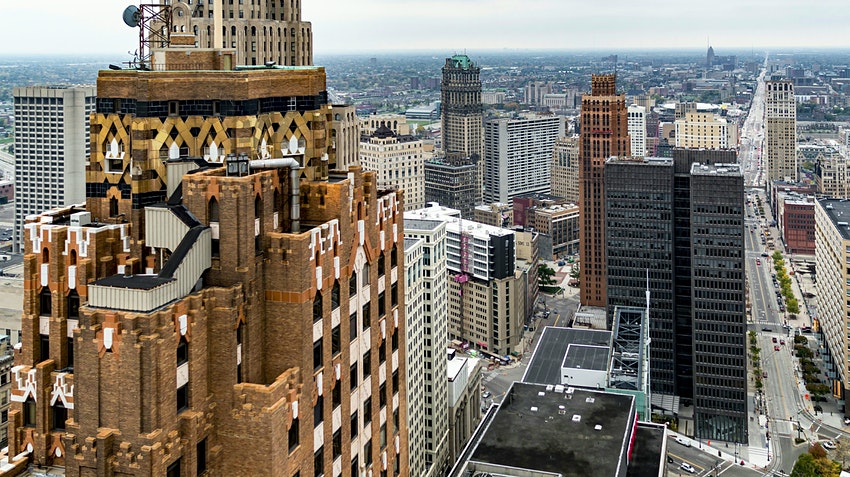
Detroit, Michigan
Like Buffalo, Detroit was booming during the deco years as the automobile industry took off and immigrants flocked to the city’s factories for work. New buildings went up all the time in the latest style, including jazz clubs such as Cliff Bell’s, the iconic Fisher Building, the glittering Fox Theater, the Penobscot Building and skyscrapers such as the Guardian Building. There’s so much to see in Detroit it’s well worth embarking on a walking tour. You can put your feet up afterwards at The Siren Hotel, built in 1926 and originally known as the Wurlitzer Building.
Source: www.lonelyplanet.com

Leave a reply